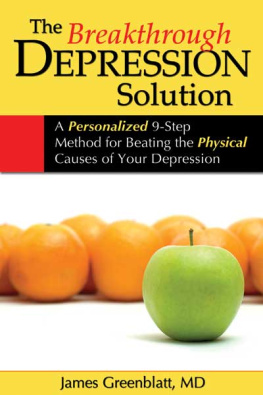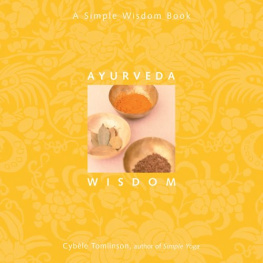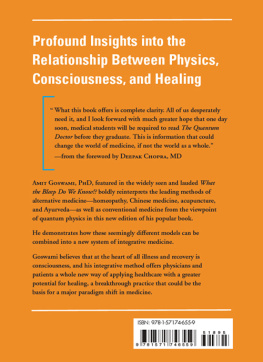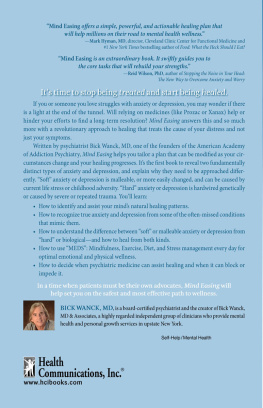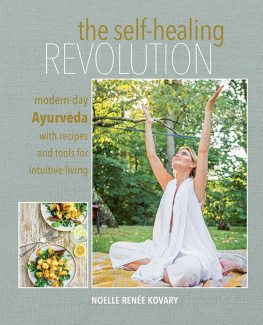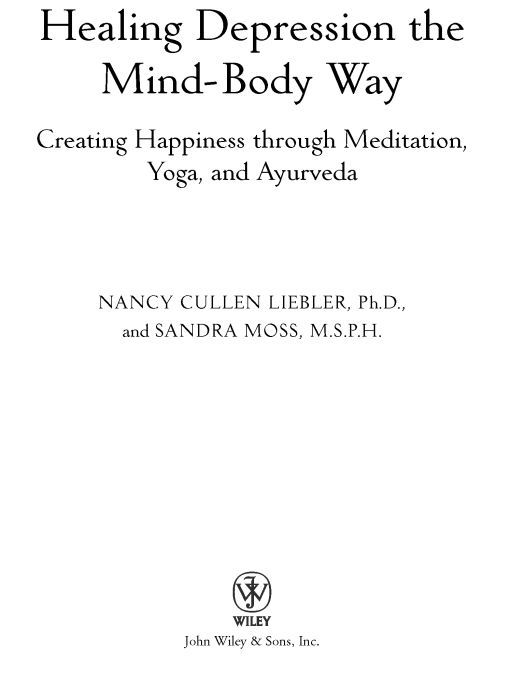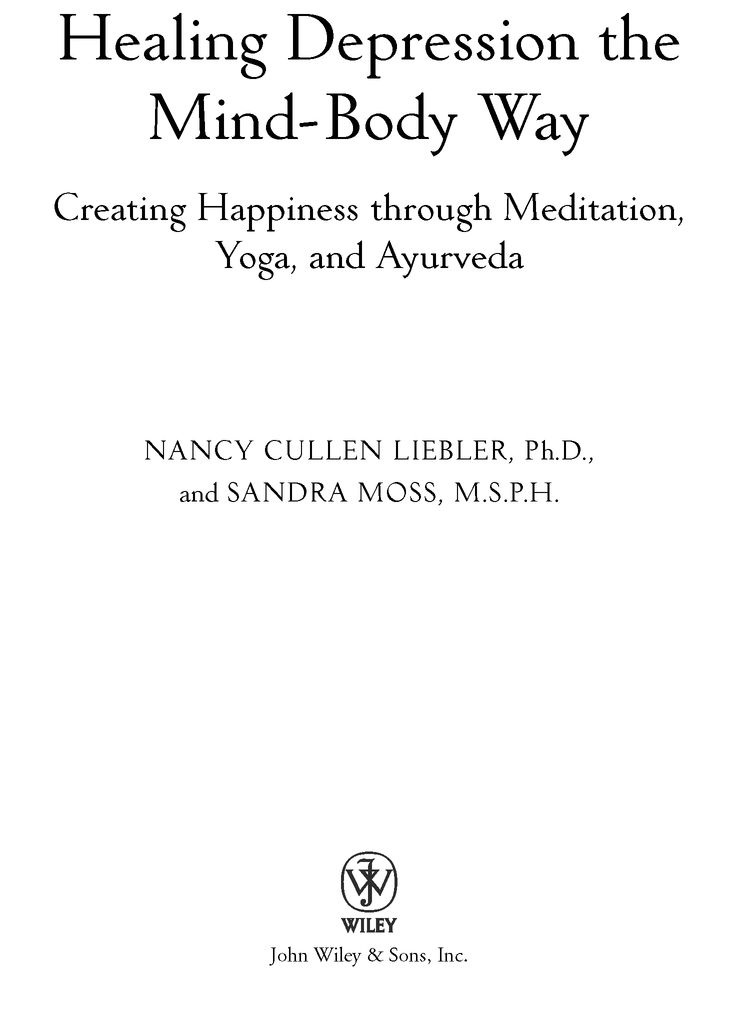Table of Contents
To the wisdom inherent in each and every one of usmay it prevail and bring forth happiness and vitality.
Foreword
The ancient, timeless wisdom of Ayurveda, the science of life, focuses on the human being. According to Ayurveda, every individual is indivisibleundivided, total, completea unique expression of universal consciousness. Within this life, there is a beautiful amalgamation, which is the union between energy and matter, or rather, the union among the body, mind, and conscious principle.
In the human body, every single cell is a center of awareness and is a functional unit that contains its own intelligence called mahat. Furthermore, there is a beautiful communication taking place among cellsthis is the flow of intelligence, also known as prana. Prana is a bridge among the body, mind, and consciousness. It is the manifestation of consciousness into the great five elementsspace (also known as ether), air, fire, water, and earth. These elements operate at the cellular and physiological level. The structural aspect of the body is governed by ether (or space), air, fire, water, and earth. However, the functional aspect of the body is governed by the three doshas: Vata, Pitta, and Kapha.
Prakruti is an individuals unique constitution, his or her unique genetic code. The model of prakruti in Ayurveda speaks a great deal about the interplay of Vata, Pitta, and Kapha and how they govern our psychophysiology and psychopathology. Over time, however, the bodily doshic ratio of Vata, Pitta, and Kapha can change, and that altered state is called vikruti. We are constantly exposed to external environmental changesdiet, lifestyle, relationships, jobs, even seasons. These changes are constantly bombarding the body, and the doshas react in the form of doshic aggravation. This is a crucial point where the disease process begins. Vikruti, the altered state of the doshas, can happen on either a physical or mental level.
This beautiful book, Healing Depression the Mind-Body Way, explains the interplay among the three doshas. Nancy Liebler and Sandra Moss have nicely blended Ayurvedic philosophy into their unique work in the psychological field.
The many faces of depression reflect qualitative and quantitative changes in Vata, Pitta, and Kapha. When Liebler and Moss speak about the broken brain, they are mirroring the Ayurvedic concept that biochemical disorders can create a khavaigunya, or defective space, in the manovaha srotas, which is the mind-body connection mechanism. Manovaha srotas are the psychoneurological channels through which thoughts, feelings, and emotions flow continuously between the body and the mind. When these channels become blocked, a defective space is created that permits the doshas to accumulate and create psychological problems. Depression is one of these problems.
Nancy Liebler and Sandra Moss have taken the wisdom of Ayurveda and elegantly integrated it with yoga and meditation in this book, creating a healing modality that addresses the whole person. Every sentence of this book breathes the truth of spiritual awakening so that the chemistry of happiness can unfold by metabolizing life, processing matter, and digesting the emotionsall of which creates the chemistry of happiness. If we pay complete attention to our thoughts, feelings, and emotions, a transformation takes placeand through that transformation, we can awaken our own physician within.
Ayurveda explains that every person is a good healer; the body knows how to heal itself. Healing Depression the Mind-Body Way offers a new dimension to healing oneself. It teaches us a very simple and practical way to live without suffering from depression. It is my wish that great joy, happiness, and healing energy will unfold in your heart as you read this book.
Vasant Lad, B.A.M.& S., M.A.Sc.
Acknowledgments
The authors would like to acknowledge the many sages, teachers, scholars, and guides who have illuminated the world with the light of Ayurveda.
They would like to express their gratitude to all of the individuals who have contributed to this endeavor. To James Brooks, M.D., Paul Dugliss, M.D., and Suhas Kshiirsagar, M.D. Ayur. for their encouragement and tutelage. To their agent, Doris Michaels, and to Delia Berrigan-Fakis of the Doris Michaels Literary Agency. To the staff at John Wiley & Sons, with a special thanks to Tom Miller, Christel Winkler, and Kimberly Monroe-Hill for their insight, leadership, and commitment. To Judith Antonelli for exquisitely polishing the manuscript. To Chris Houghton for his artistic spark in creating the illustrations for this book.
Nancy acknowledges her good fortune in having her husband, Bud, in her life. He has been consistently supportive and inspiringand always lots of fun to be with.
Sandra offers thanks to her husband, Frederick, who sees life through spiritual eyes, and her mother, Fabiola, for instilling in her the importance of living a life filled with Spirit.
Introduction
By picking up this book, you are in good company. You are among the 40 percent of Americans who are, according a report in the Journal of the American Medical Association, regularly accessing care from outside the Western medical tradition. People are increasingly seeking treatment based on a paradigm that goes beyond the reductionist view of the human body.
This book is about Ayurvedathe original and ultimate form of mind-body medicine that is the traditional system of medicine in Indiaand its power to eradicate the root of depression. The central theme of Ayurveda is that nature and the mind-body are aspects of a single continuum of intelligence. Vedic knowledge (dating from Indias Vedic civilization, thousands of years ago) explains that what exists in the macrocosm of the natural world also exists in the microcosm of human physiologyin other words, the human mind-body and the natural world are reflections of each other.
According to Ayurveda, human physiology is an ecosystem in which a stressor on any one aspect of the being affects every other aspect. Research in Western medicine is currently validating this concept that has come to us from the ancients. For instance, psychoneuroimmunology (PNI) informs us that the systems of the body are interrelated and that they communicate with one another through messenger molecules. PNI is considered to be one of the most exciting fields in modern medicine. Studies in this field have taught us that, in a very basic sense, our health is the direct result of the relationship between the mind and the body.
The knowledge that has come to us from the Vedic sages and from PNI informs us that the body is the outward manifestation of the mind, of awareness or consciousness. PNI proposes that we can no longer consider the mind as one thing and the body as another, or mental health as separate from physical health. This is new information for us Westerners, who are often inclined to believe that if we are depressed or anxious we should just snap out of it. That isnt the case. We can no more snap out of emotional difficulties than we can snap out of physical challenges. We need practical techniques to eradicate the root of depression and anxiety. This is where Ayurveda comes into the picture.
Refined techniques that help to bring balance to the mind-body were developed thousands of years ago. These techniques are available to us today, and they have never been needed more. Depression is growing by leaps and bounds in every industrialized country in the world. It is considered to be the common cold of mental illness. Since depression is caused by a nexus of issues, the likelihood is that there will never be a one-size-fits-all magic bullet that will be a cure-all. Instead, monitoring ones lifestyle is and always will be the best way to ensure physical, emotional, and mental health. We wrote this book hoping that it will give you what you need to make the changes necessary to enhance your health and ultimately your happiness.


